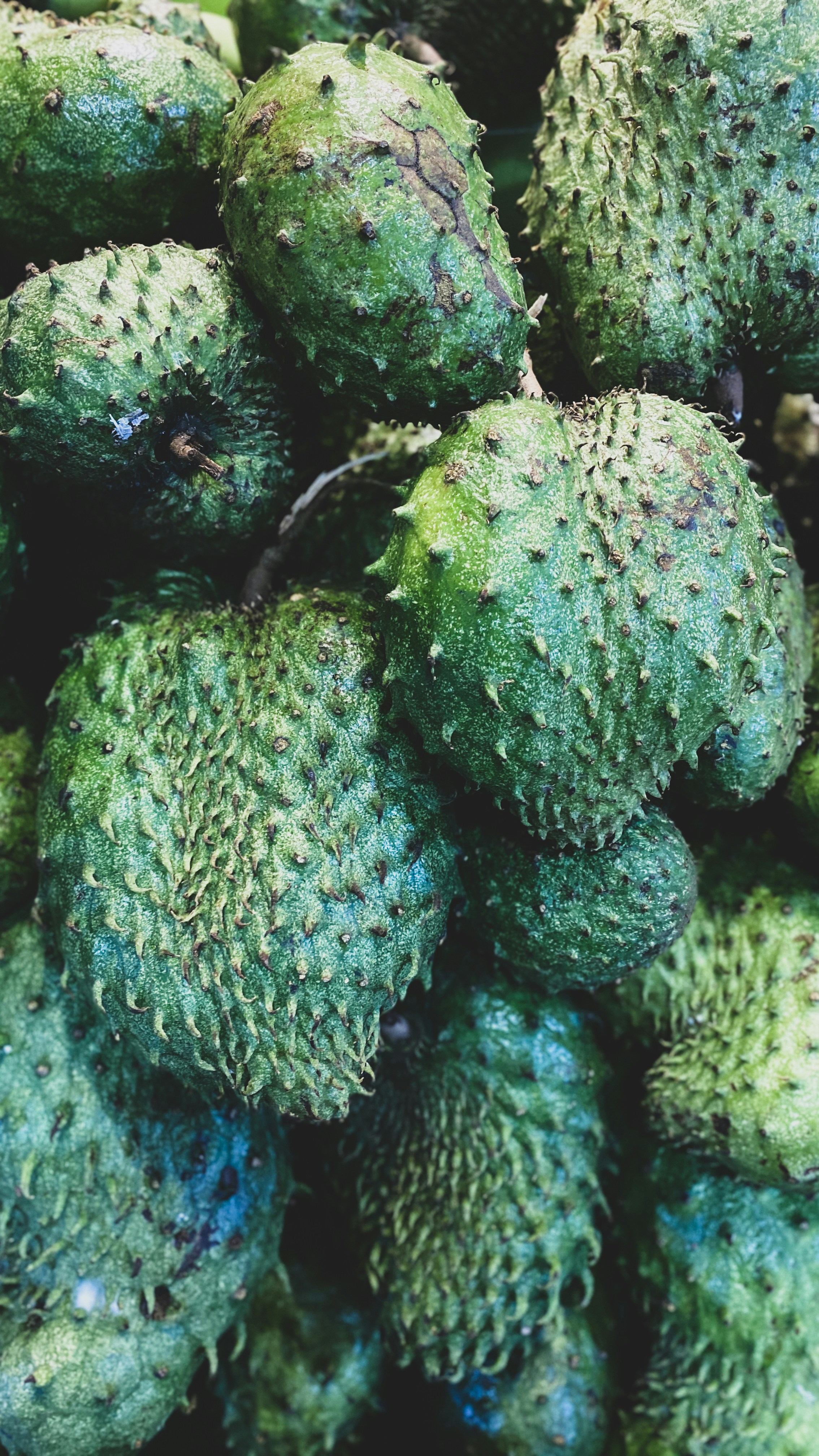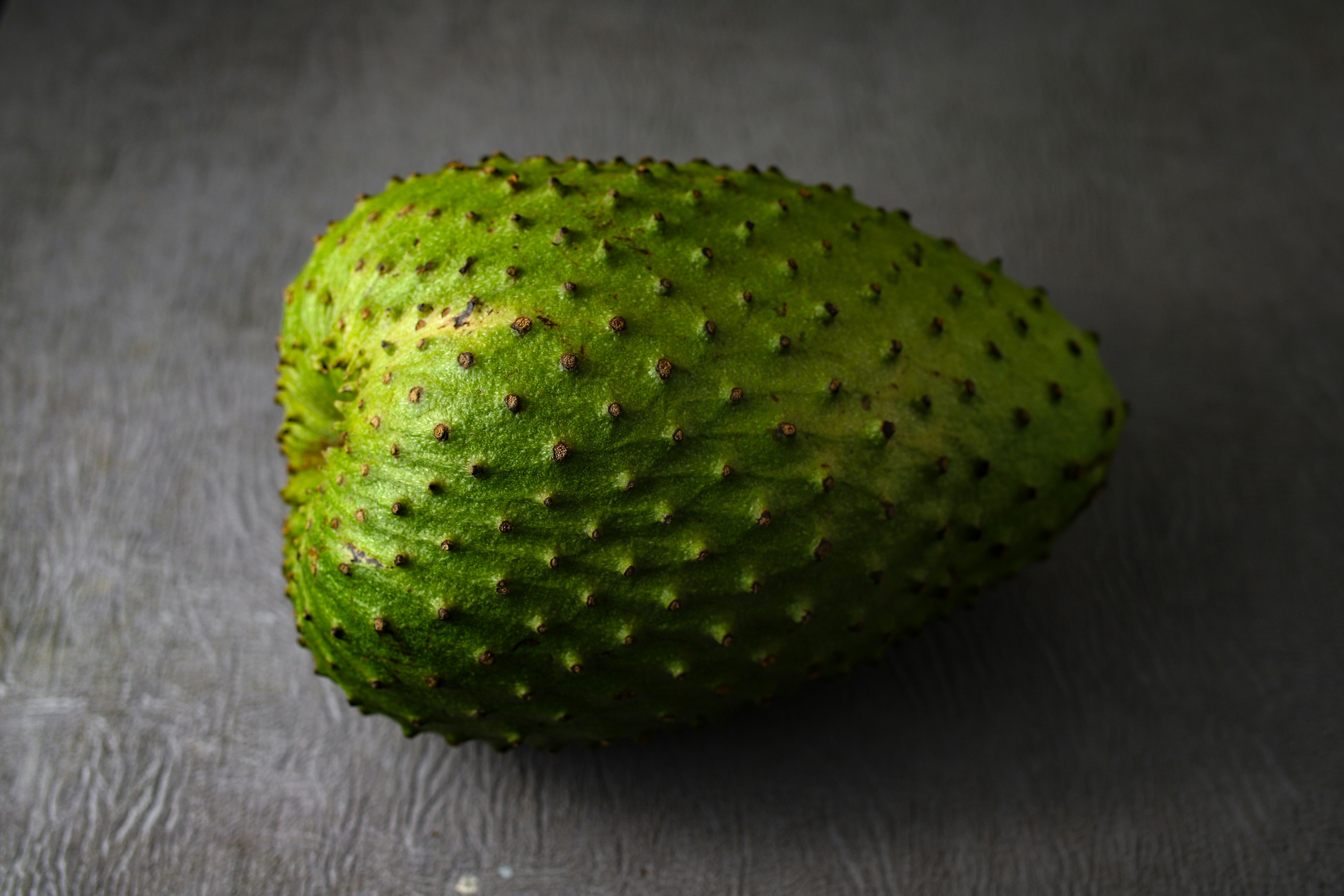Welcome! Today, we’re going to talk about what guanabana is called in English. By the end of this article, you’ll have a better understanding of this exotic fruit and what it’s known as in the English language. So, let’s get started!
Guanabana, also known as soursop, is a fruit native to the tropical regions of the Americas. It is known for its prickly appearance and unique flavor. In English, this fruit is commonly referred to as soursop. With a creamy, tart taste, soursop is often used in beverages, desserts, and even ice creams. Now that you know the English name for guanabana, you can explore recipes and enjoy the deliciousness of this tropical fruit.

Overview of Guanabana
What is Guanabana?
Guanabana, also known as soursop, is a tropical fruit that is native to the regions of Central and South America. It is recognized for its unique appearance, distinct flavor, and numerous health benefits.
Guanabana has gained popularity worldwide, particularly for its potential cancer-fighting properties and exceptional nutritional profile.
In this article, we will explore the various aspects of Guanabana, including its geographical origins, appearance, taste, health benefits, traditional and culinary uses, nutritional profile, cultivation, potential side effects, research, and its relation to other fruits.
Guanabana’s geographical origins
Guanabana originates from the tropical regions of Central and South America, where it has been cultivated for centuries. It is primarily found in countries such as Mexico, Peru, Brazil, and the Caribbean islands.
The fruit requires a warm and humid climate to thrive, making these regions ideal for its growth. Over time, Guanabana has spread to other parts of the world, including Southeast Asia, Africa, and the Pacific Islands.
Importance of Guanabana in various cultures
Guanabana holds significant cultural and traditional importance in many societies. In various Latin American countries, the fruit is used in traditional remedies for its potential medicinal properties.
It is believed to support overall health and well-being, with its consumption considered beneficial for treating ailments such as digestive issues, parasites, fever, and inflammation.
Additionally, Guanabana is a key ingredient in traditional cuisine, where it is used to create delicious dishes, beverages, and desserts.
Guanabana’s Appearance and Taste
Physical characteristics of Guanabana
Guanabana is a large, heart-shaped fruit with green, spiky skin. It can grow up to 12 inches in length and weigh several pounds, making it one of the largest fruits in the tropical fruit category.
The exterior of Guanabana has a bumpy texture, reminiscent of a reptile’s skin. When ripe, the skin of the fruit may turn slightly yellowish-green, indicating its readiness for consumption.
However, it is important to note that the skin should not be consumed due to its toxic nature.
Exploring Guanabana’s flavor profile
The flesh of Guanabana is creamy white in color, with a texture similar to that of a custard. It is soft, juicy, and contains numerous small, black seeds.
The flavor of Guanabana in english is often described as a blend of tropical fruits, including pineapple, mango, and strawberry, with a hint of citrus. Its taste can be both sweet and tangy, providing a refreshing and tropical experience for your palate.

Health Benefits of Guanabana
Antioxidant properties of Guanabana
Guanabana is rich in antioxidants, which help to protect the body against free radicals. Free radicals are harmful molecules that can cause oxidative stress, leading to various health issues.
The antioxidants present in Guanabana, such as vitamin C and flavonoids, help neutralize these free radicals, reducing the risk of chronic diseases and promoting overall well-being.
Potential cancer-fighting properties
One of the most significant health benefits attributed to Guanabana is its potential cancer-fighting properties.
Several studies have suggested that the fruit contains certain compounds, such as acetogenins, which have shown anti-cancer effects in laboratory tests.
These compounds are believed to selectively target and inhibit the growth of cancer cells, without harming healthy cells.
While further research is still needed, Guanabana shows promising potential in the field of cancer treatment and prevention.
Supporting immune system health
Guanabana is packed with vitamins and minerals that are essential for a healthy immune system. It is particularly rich in vitamin C, which is known to boost immune function and protect against common illnesses.
In english additionally, Guanabana contains other immune-supporting nutrients, such as vitamin B6 and folate, which play a crucial role in the production of white blood cells and the maintenance of overall immune system health.
Promoting digestive health
The high fiber content in Guanabana makes it an excellent choice for promoting digestive health. Fiber helps regulate bowel movements, prevent constipation, and maintain a healthy digestive system. Furthermore, Guanabana contains natural compounds that possess anti-inflammatory properties, which can help soothe and relieve digestive issues such as stomach ulcers and inflammation.
Managing blood pressure and cardiovascular health
Guanabana provides several components that contribute to heart health and the management of blood pressure. It is low in sodium and high in potassium, which helps maintain a healthy balance of fluids in the body and regulate blood pressure levels. Additionally, Guanabana is rich in fiber, which has been linked to a reduced risk of heart disease. The combination of these factors makes Guanabana a fruit worth incorporating into a heart-healthy diet.
Traditional and Culinary Uses of Guanabana
Traditional remedies and medicinal uses
In many traditional medicine practices, Guanabana is used for its potential medicinal benefits. It is believed to have antimicrobial properties, aiding in the treatment of bacterial and fungal infections. The fruit has also been utilized in natural remedies for managing conditions such as hypertension, diabetes, and inflammation. However, it is essential to consult with a healthcare professional before using Guanabana as a treatment for any medical condition.
Guanabana in traditional cuisine
The unique flavor and texture of Guanabana make it a sought-after ingredient in traditional cuisine. In Latin American countries, it is commonly used in various dishes, both sweet and savory. Guanabana is often incorporated into creamy desserts, such as ice creams, custards, and pastries, providing a delightful tropical taste. Additionally, it can be used in savory dishes, such as curries and stews, adding a touch of sweetness and depth to the flavors.
Popular Guanabana beverages and desserts
Guanabana is a popular ingredient in many refreshing beverages and desserts. It is commonly used to make juices, smoothies, and milkshakes, as its creamy texture enhances the drink’s consistency. Guanabana is also the primary flavor in traditional Latin American fruit drinks, such as agua frescas. Furthermore, the fruit is often featured in ice creams, sorbets, and popsicles, providing a cool and tropical treat on hot summer days.

Guanabana’s Nutritional Profile
Vitamins and minerals in Guanabana
Guanabana is a nutrient-dense fruit, packed with various vitamins and minerals. It is an excellent source of vitamin C, providing more than the daily recommended intake in a single serving. Vitamin C is essential for immune function, collagen production, and acts as a powerful antioxidant. Guanabana also contains significant amounts of vitamin B6, folate, potassium, and magnesium, which contribute to overall health and well-being.
Dietary fiber content
Guanabana is an excellent source of dietary fiber, with each serving containing a substantial amount. Fiber is crucial for maintaining a healthy digestive system and preventing constipation. It also helps regulate blood sugar levels, supports weight management, and aids in reducing the risk of certain chronic diseases, such as heart disease and type 2 diabetes.
Caloric value of Guanabana
Despite its sweet and creamy taste, Guanabana is relatively low in calories. A serving of Guanabana, which is approximately one cup of diced fruit, contains around 130 calories. This makes it a suitable choice for those looking to manage their calorie intake while still enjoying a delicious and nutritious fruit.
Cultivating Guanabana
Ideal growing conditions for Guanabana
Guanabana thrives in a tropical climate, making it best suited for regions with high temperatures and humidity. The fruit requires well-drained soil and regular watering. While Guanabana can tolerate partial shade, it generally prefers full sunlight for optimal growth. It can be grown in both backyard gardens and larger orchards, provided the necessary conditions are met.
Harvesting and storing Guanabana
Guanabana is typically harvested when the fruit is fully ripe, which is indicated by a slight yellowish-green color on the skin. However, it is important to handle the fruit with care during the harvesting process, as the skin can be easily damaged. Once harvested, Guanabana should be consumed or stored promptly. It is recommended to refrigerate the fruit to extend its shelf life and preserve its flavor.

Potential Side Effects and Precautions
Possible allergic reactions to Guanabana
While Guanabana in english, soursop is generally well-tolerated, some individuals may experience allergic reactions. Allergies to Guanabana are rare but can occur. Symptoms of an allergic reaction may include itching, rash, hives, or swelling. If you suspect an allergy to Guanabana, it is important to seek medical advice before consuming the fruit.
Effects of consuming excessive amounts of Guanabana
Consuming excessive amounts of Guanabana, particularly the seeds and leaves, may cause certain side effects. These include nausea, vomiting, and neurological symptoms such as movement disorders. It is essential to consume Guanabana in moderation and avoid ingesting the toxic parts of the fruit, such as the skin and seeds.
Research and Studies on Guanabana
Scientific investigations into Guanabana’s health benefits
Numerous scientific studies have been conducted to explore the potential health benefits of Guanabana. Research has primarily focused on its anti-cancer properties, with promising results from laboratory tests and animal studies. However, it is crucial to note that most of the research is still in the early stages, and further clinical trials are needed to fully understand the effects of Guanabana on human health.
Clinical trials and findings
Several clinical trials have been conducted to evaluate the therapeutic potential of Guanabana in cancer treatment. While some studies have shown positive results, it is important to emphasize that Guanabana should not be considered a standalone treatment for cancer. It is always recommended to consult with healthcare professionals and follow evidence-based medical advice for the management of any health condition.
Guanabana and Its Relatives
Guanabana’s botanical family
Guanabana belongs to the Annonaceae family, which includes other fruits such as cherimoya, pawpaw, and custard apple. These fruits share similar characteristics in terms of appearance and taste, often referred to as “custard fruits” due to their creamy texture.
Related fruits and their similarities or differences
Guanabana is often compared to other tropical fruits due to their similar flavor profiles. Fruits such as cherimoya and atemoya share a creamy texture and a subtle blend of tropical flavors. While these fruits may have slight variations in taste, they all offer a delightful and unique tropical experience.
Conclusion
Summarizing the significance of Guanabana
In conclusion, Guanabana in english, soursop, is a tropical fruit with a remarkable nutritional profile and potential health benefits. Its distinct appearance, creamy texture, and tropical flavor make it a sought-after fruit in both traditional cuisines and modern culinary creations.
Guanabana’s potential cancer-fighting properties, immune system support, and digestive health benefits make it a valuable addition to a well-balanced diet.
Encouraging exploration of Guanabana’s benefits and versatility
When it comes to exploring the world of tropical fruits, Guanabana in english, soursop stands out as an exceptional choice.
Its versatility allows for countless possibilities in both traditional remedies and modern culinary creations. So, why not embark on a journey to discover the wonders of Guanabana?
Incorporate it into your diet, try new recipes, and experience the unique flavors and health benefits this remarkable fruit has to offer.

Hi, I’m King Phils, a Dragon Fruit enthusiast and blogger. Welcome to my website, where I share everything I know and love about this amazing fruit.